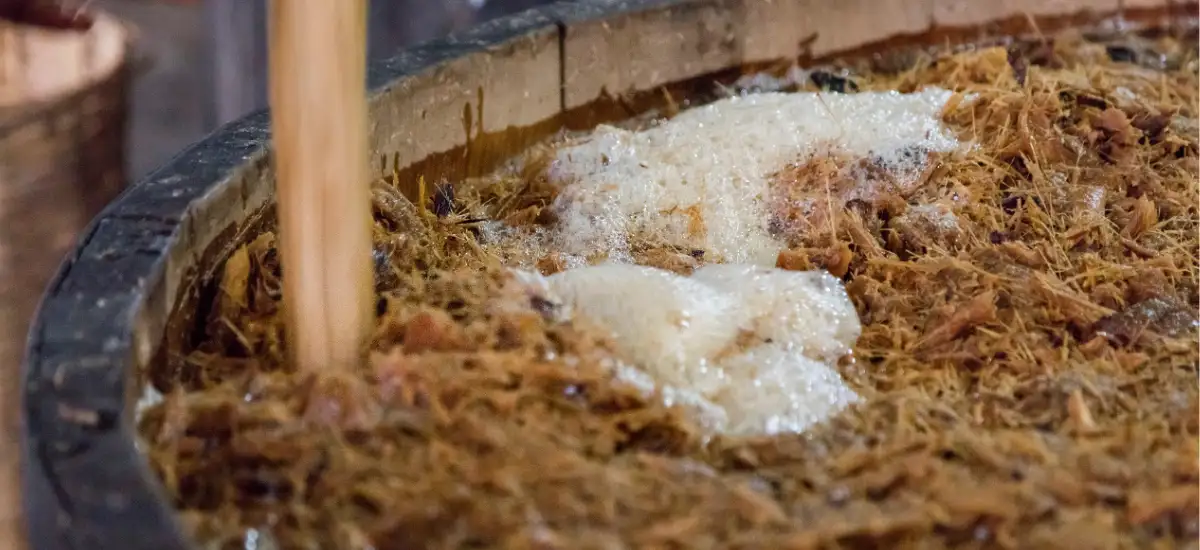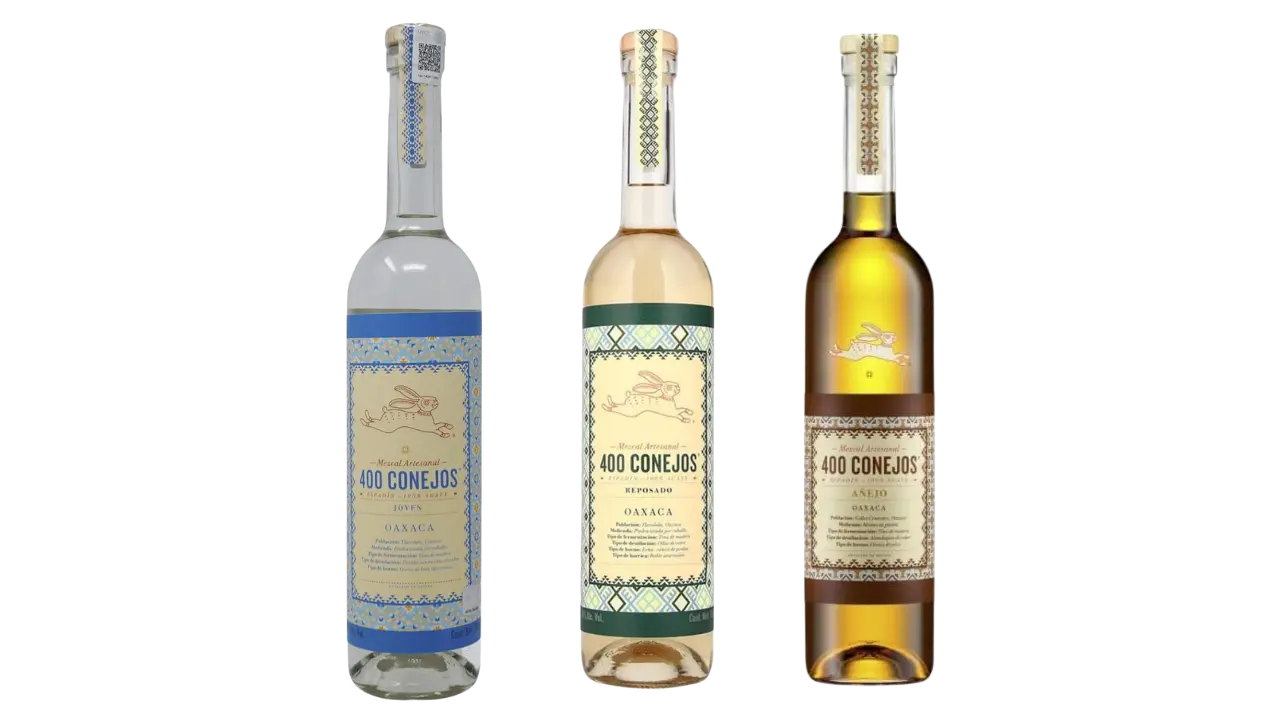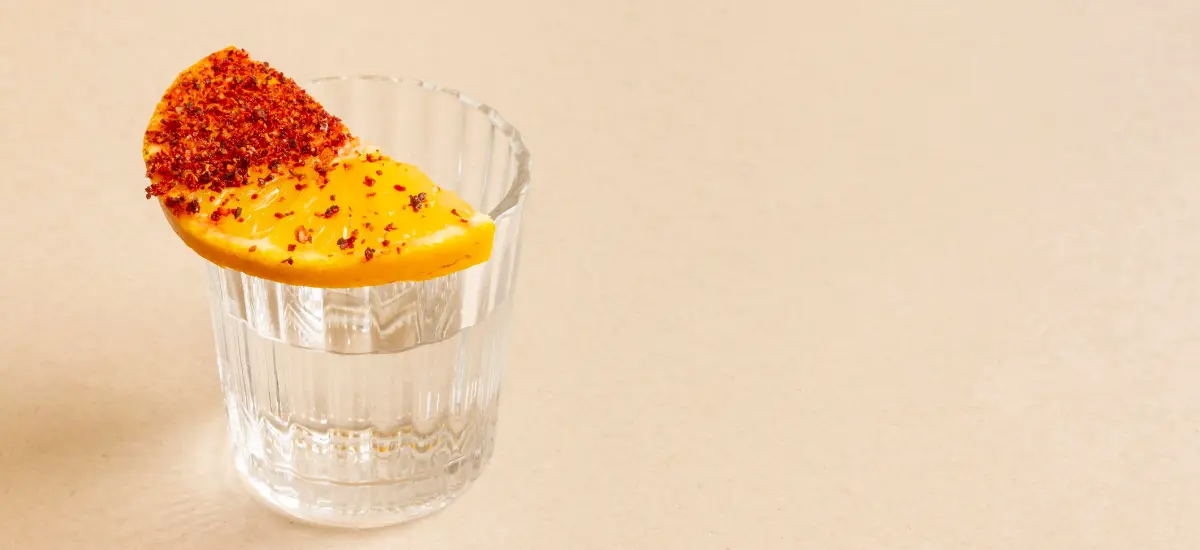Mezcal is a handcrafted alcoholic beverage. What is mezcal made from? Mainly made from the “Maguey” plant or also known by its scientific name “Agave”.
Like tequila, mezcal is distilled from this mythical plant, with the difference that mezcal can be produced from more than 20 types of agave and tequila is only produced from the “blue agave”.
Maguey has a pre-Columbian etymological origin in Mexican culture, which in Nahuatl means “The female goddess” and in extension, Mezcal means “Cooked Maguey”.
The production of mezcal dates back to the 16th century, although its first professional and commercial production and promotion dates back to after the Mexican Revolution.

Mezcal is one of the most complicated alcoholic beverages to produce, since most commercial mezcals are made by hand, hence its great appreciation and cost. We list step by step the process to produce mezcal:
Agave Cultivation: In the heart of Mexico, in regions such as Oaxaca, Guerrero and Michoacán, agave is cultivated, mainly agave espadín. This crop follows organic methods, avoiding fertilizers and pesticides, and requires a maturation process that can last from 5 to 8 years.
Harvesting and Preparation: Once mature, the agave is harvested by experts known as jimadores. They are in charge of cutting off the leaves and roots, leaving only the piña, the heart of the agave, which can weigh between 40 and 100 kg.
Baking: This step is crucial to transform the carbohydrates into fermentable sugars. The pineapples are baked in volcanic stone ovens for approximately four days, changing color and texture.
Grinding: Once baked, the pineapples are crushed to extract the juice. This process can be manual, using mallets or taonas (large circular stones moved by animals), or mechanical, using mills or electric crushers.
Fermentation: The juice obtained is transferred to wooden vats where fermentation takes place. Here, the natural yeasts of the environment and the agave itself act, transforming the sugars into alcohol. This process varies in duration, from a few days to several weeks, depending on the climate and recipe.
Distillation: In copper stills, usually pear-shaped, mezcal is distilled to separate the alcohol from the water and other substances. This stage defines the alcohol content of the mezcal, which usually ranges between 40 and 55 degrees.
Quality Evaluation: A traditional technique for evaluating the quality of mezcal is the cord test. Mezcal is shaken in a jícara and the foam and bubbles are observed. An abundant and persistent foam is a sign of a high quality mezcal.
Resting and Bottling: Finally, the mezcal can be bottled immediately or rested in wooden barrels for aging, which gives it more complex color and flavors. The final label provides information about the producer, the type of agave used and the region of origin.
This process, rooted in Mexican culture, reflects the dedication and respect for tradition that defines authentic mezcal.
Mezcal and tequila seem to be the same type of beverage, but they are not. Although they do share similarities, they have unique particularities.
As mezcal lovers, we want to share the best differentiation between these two. Mainly: tequila uses only 1 type of agave for its production, while mezcal can be produced from more than 20 types of agave.
This increases the variety and unique characteristics to enrich the mezcal experience.
Second: The mode of production or creation of mezcal and tequila are very different. Tequila is mostly industrially produced, while mezcal is mostly artisanal.
This makes mezcal much more appreciated, since its production, therefore, is more careful and time-consuming.
Third: Mezcal is usually stronger than tequila. It is officially recorded that mezcal has 35% to 55% alcohol content. And tequila between 35% to 45%.
Learn about mezcal vs tequila, here.
This is a topic we love to touch on, as the taste of mezcal is very uncertain in most cases.
Why is that?
The flavor of mezcal has the particularity of depending, first, on the type of agave used, second, the territory, and third, the production method of the master mezcalero.
These three factors are of great importance for the flavor we witness in mezcal, since a mezcal produced in Durango will not taste the same as one produced in Oaxaca.

As we mentioned, mezcal has a great variety of distinctions and here we want to give a small guide about the great variety of classifications and types of mezcal that currently exist.
Mezcal can be produced from more than 20 types of agave, here is a list of the agaves that are mostly used to create mezcal:
Mezcal can be matured and left to rest for a certain period of time in the barrels where it was produced in order to obtain different kinds of mezcal, these kinds of mezcal are mostly derived from mezcal espadín or young mezcal:
These types of mezcal are differentiated by a unique process of its elaboration, or addition of ingredients for the production of a new type of mezcal:
These types of mezcal are differentiated by their type of elaboration or combination with sweet ingredients to achieve types of flavors or type of cocktails and find a sweeter experience with mezcal:
Mezcal cream.
Mezcal cocktails.

How is mezcal drunk? Apart from the fact that mezcal has a great variety of classes, classifications and types. The best of all is that you can increase the experience much more, knowing how to drink it.
For amateurs, drinking mezcal should be done in small gulps or “kisses” due to its high alcohol content, this is the best option on how to drink mezcal. So you can dominate the mezcal, and not let the mezcal dominate you!
It is also recommended to drink it in a glass of shots.
And if you are looking to enhance the mezcal drinking experience, we recommend combining mezcal with slices of orange, or lemon, or with salt of worm.
Or also combine sprinkle a little bit of worm salt on the orange slice, take a bite and then take a shot of mezcal.
When we talk about the denomination of origin, we refer to where mezcal is produced.
Currently, mezcal is officially produced in 12 states: Oaxaca, Guerrero, Michoacán, Tamaulipas, Durango, Guanajuato, San Luis Potosí, Zacatecas, Puebla, Estado de México, Morelos and Aguas Calientes.
The last 3 states were recently added and there is controversy as to whether they should be on the official list of mezcal producing states.
Only the espadin agave takes between 5 to 8 years to be harvested and treated for mezcal production. And if we go to another type of agave, the jabali agave takes between 12 to 15 years to mature.
This is why mezcal is so appreciated and is seen as a legendary and spirituous beverage.
As if that were not enough, there are agaves that are given a more careful and time-consuming elaboration, complicating a little more its artisanal elaboration process.